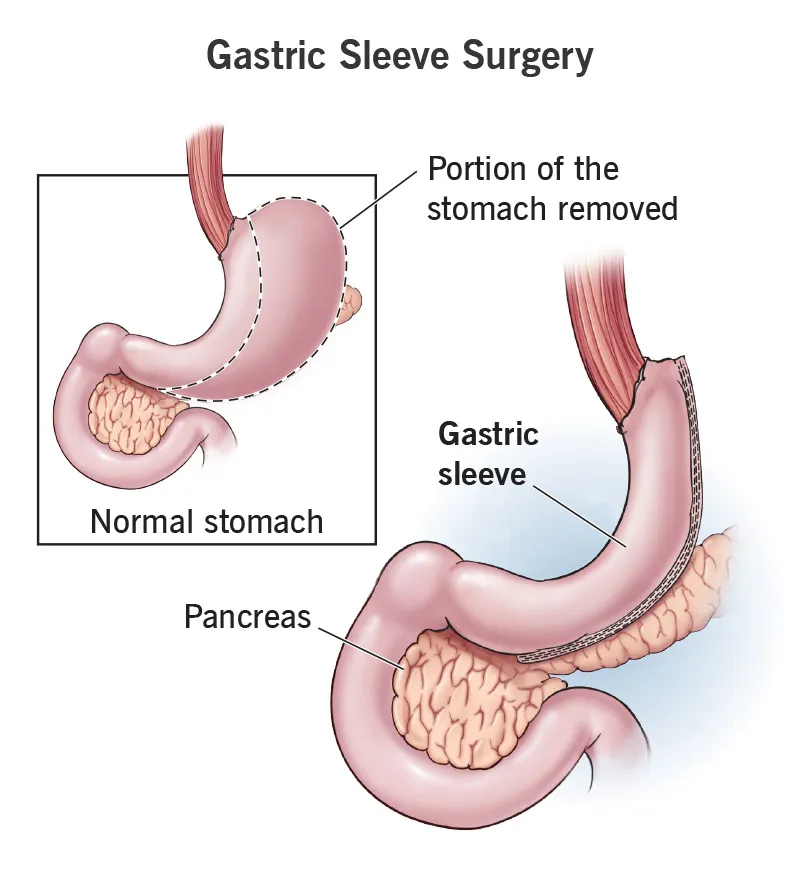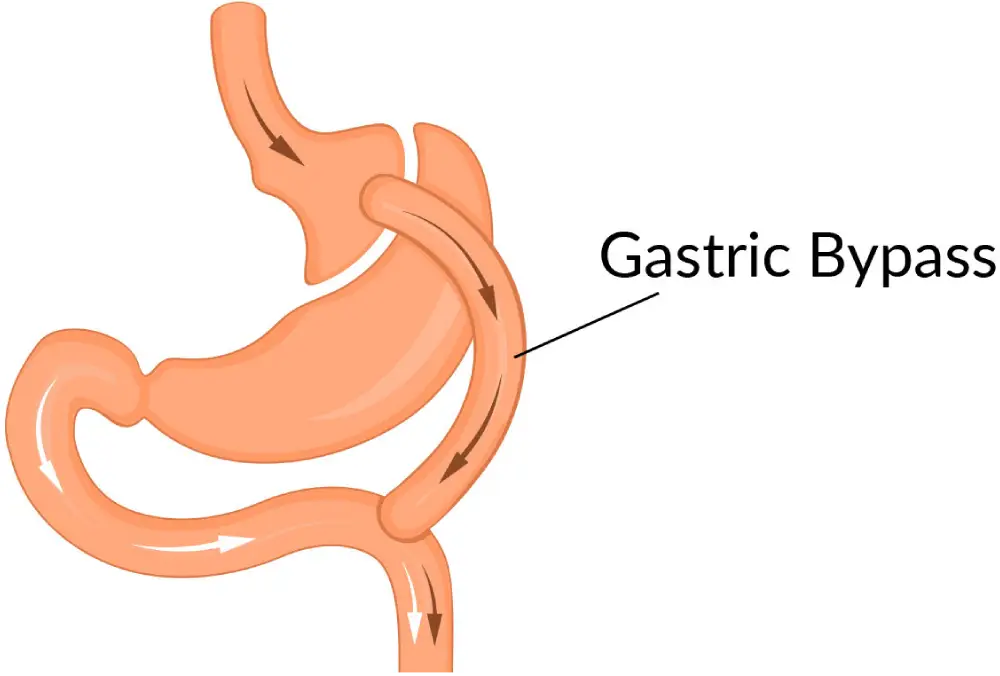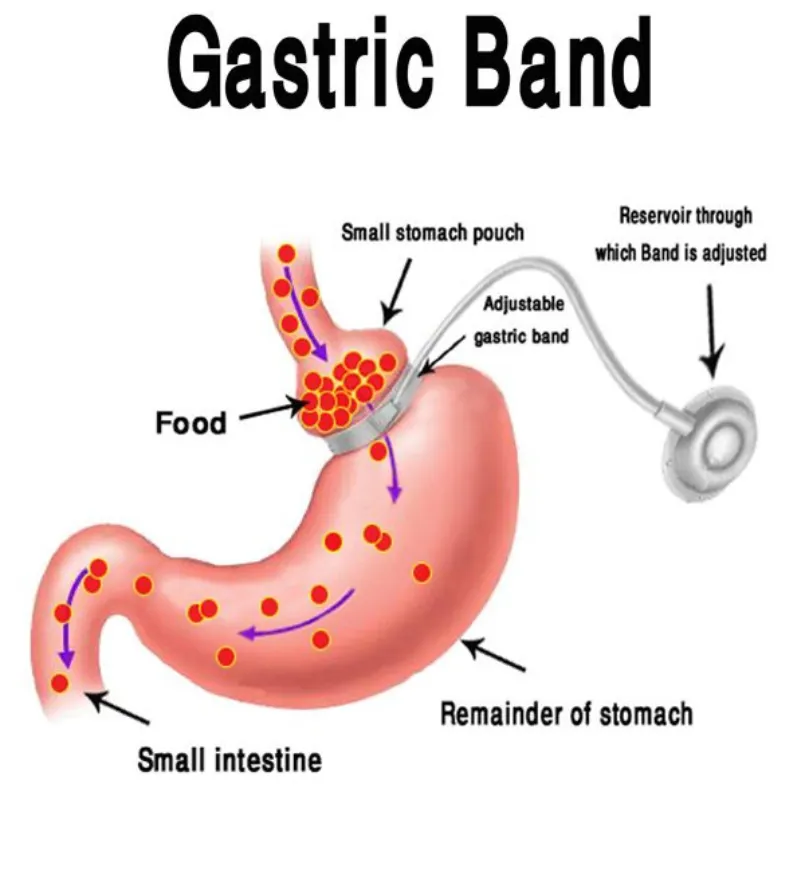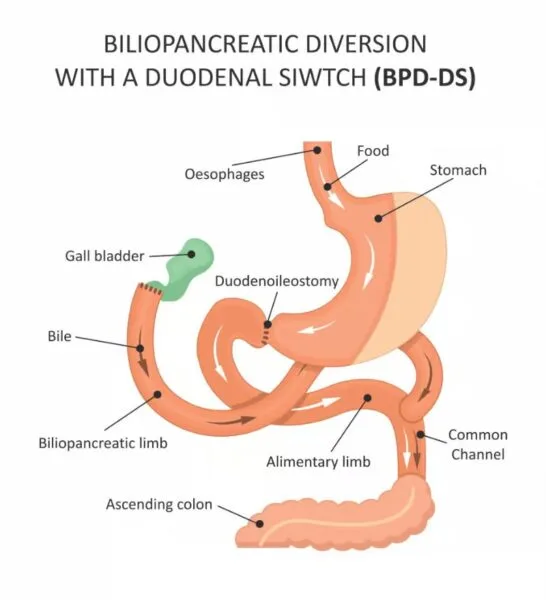Bariatric surgery
Bariatric surgery, is weight loss surgery, that involves surgical procedures that are intended to modify the digestive system, thereby help individuals with severe obesity to lose weight and improve obesity related health conditions like diabetes and high blood pressure. These surgeries are recommended for individuals for whom obesity poses a significant health risk and diet, exercise, and medication have been unsuccessful.
The four primary types of bariatric surgery, wherein, either the food intake is restricted or may be malabsorptive or could be both methods.
They are
1. Sleeve Gastrectomy:
Sleeve gastrectomy is a laparoscopic surgery that removes about 75-85% of the stomach, leaving a small, tube-shaped stomach that limits food intake and decreases hunger by reducing the production of the appetite hormone called ghrelin. It lis effective for significant weight loss and can also improve or resolve obesity-related conditions like type 2 diabetes and sleep apnea. Since it is a laparoscopic procedure, it involves small abdominal incisions and thus shorter recovery time.

2. Roux-en-Y Gastric Bypass (RYGB):
The stomach is stapled to create a small pouch (about the size of an egg) that holds less food. The small intestine is divided, and the bottom part (the Roux limb) is connected to this new stomach pouch, leading to Food directly passing into the small intestine, bypassing the larger, bypassed portion of the stomach and the first part of the small intestine (Duodenum). Thereby Bypassing these parts of the digestive tract reduces the absorption of nutrients and calories, contributing to weight loss.
The benefits of this method are:
1.Significant and sustained weight loss.
2.Resolve obesity-related health problems such as type 2 diabetes, high blood pressure, and GERD.

3. Adjustable Gastric Banding (AGB):
The stomach is stapled to create a small pouch (about the size of an egg) that holds less food. The small intestine is divided, and the bottom part (the Roux limb) is connected to this new stomach pouch, leading to Food directly passing into the small intestine, bypassing the larger, bypassed portion of the stomach and the first part of the small intestine (Duodenum). Thereby Bypassing these parts of the digestive tract reduces the absorption of nutrients and calories, contributing to weight loss.
The benefits of this method are:
1.Significant and sustained weight loss.
2.Resolve obesity-related health problems such as type 2 diabetes, high blood pressure, and GERD.

4. Biliopancreatic Diversion with Duodenal Switch (BPD-DS)
It is a highly effective, weight-loss surgery typically recommended for individuals with severe obesity (BMI > 50). Here a smaller stomach pouch is created, the small intestine is then reconfigured. The food from the small stomach pouch travels directly into the lower part of the small intestine (ileum), bypassing most of the duodenum and jejunum. This significantly reduces the absorption of nutrients and calories.
Benefits of Biliopancreatic Diversion with Duodenal Switch
1.Significant and long-lasting weight loss.
2.It is the most effective procedure for improving and resolving type 2 diabetes.
3.The surgery affects gut hormones to increase feelings of fullness and decrease hunger.

